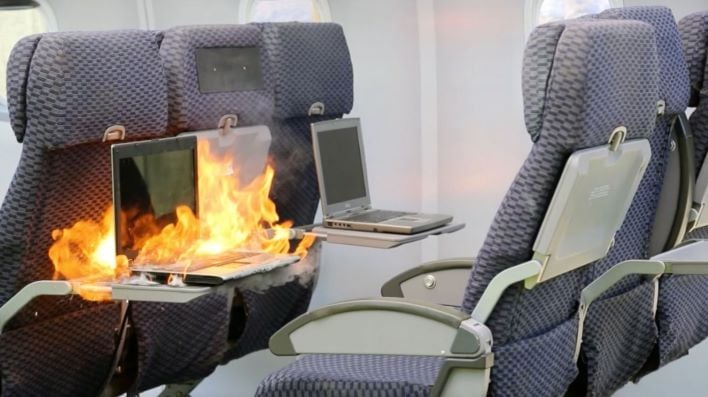Smartphone Battery Fires On Planes Ascending At An Alarming Rate And Pilots Are Worried

According to a recent CBS report, in-cabin passenger plane fires originating from lithium-ion (Li-ion) batteries are causing airlines, airplane staff, and the FAA a bunch of headaches, especially with the world being more reliant on Li-ion-powered devices than ever. From mobile phones and hearing aids to electric toothbrushes and laptops, pretty much anything brought onto an aircraft nowadays has the potential to cause catch fire due to degradation. This could lead to toxic smoke being released into the cabin, a larger fire that spreads, chemical burns, or shrapnel from an explosion.
An analysis by the US Department of Transportation's Pipeline and Hazardous Materials Administration (PHMSA) showed that the most common hazmat incident in the last decade involved Li-ion batteries (29.1 percent). PHMSA states from March 2018 till March 2023, there were 5,319 such incidents on all aircrafts in the US, of which 695 of those happened on passenger flights.
Part of the problem is that all Li-ion batteries can eventually burn - their chemistry dictates it. As the battery cells degrade, the creation of gas (a.k.a. outgassing) leads to a swollen battery. When the structural layers of the battery cannot maintain the amount of gas any longer and the right (albeit unwanted) chemical reactions occur, a fire can result. Other common causes of outgassing can also come from overcharging batteries, manufacturing defects, or excessive temperature changes.
Of course, there are at least of couple things you can do help mitigate fire risks before flying:
- Inspect your devices for any signs of unusual deformity. Taking a phone or laptop, for example, as their batteries swell, buttons can become difficult to activate, the frame could visually look deformed (it's good practice to frequently remove your phone case to inspect).
- Inspect those spare Li-ion batteries that you take in your luggage. If they're puffy, swollen, or have wrinkly wrapping, discard them immediately per your local battery disposal regulations, and
- While flying, place any Li-ion devices and batteries in your carry-on luggage only. If any items with Li-ion batteries need to checked, please declare it with the ticketing agent. That information would then be relayed to the airline and pilots, which would be useful in an emergency should an issue arise.

